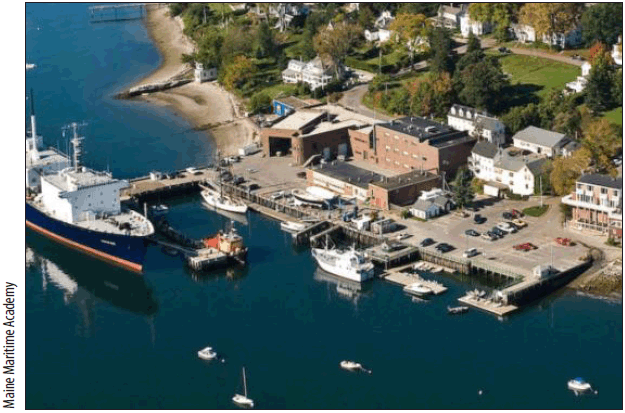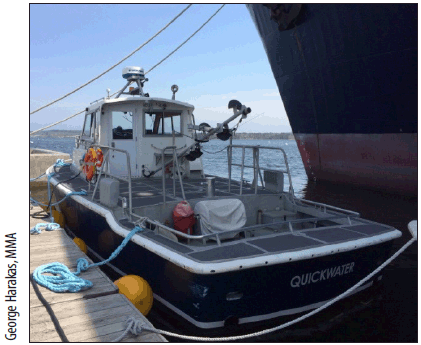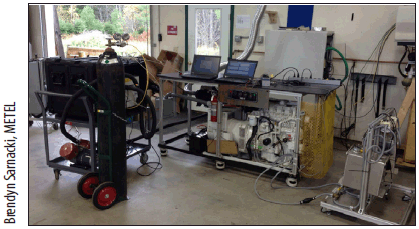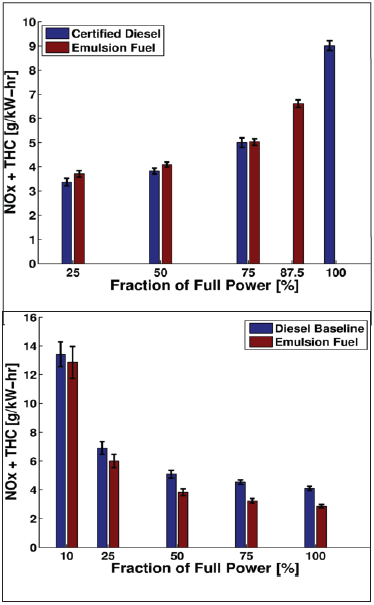You are here
Developing Diesel/Glycerin Emulsion Fuel for Use in Commercial Diesel Engines
The Marine Engine Testing and Emissions Laboratory (METEL) is a DOT University Transportation Center located at the Maine Maritime Academy (figure 1). METEL was developed to address environmental sustainability needs in transportation, primarily in the area of large-engine emissions such as those found in the marine, rail, and pipeline industries. In addition, the UTC is working on several initiatives to implement viable emissions reduction technologies for the marine industry.
The quest for future emissions reductions will require continuous emissions and performance measurement systems for technology benchmarking, engine certification, and monitoring. Impending emissions limits also identify clear openings in the market for the development of drop-in fuels1, pretreatment, and aftertreatment technologies to reduce emissions from new and existing engines. Drop-in fuel technologies are particularly appealing as they require little cost to implement and maintain and have the potential to reduce emissions and fuel expenditures if properly designed with relatively inexpensive feedstocks.
Working with a Maine startup company, Sea Change Group LLC (SCG), the METEL team is helping to develop and implement a fuel that combines glycerin with diesel fuel to lower both operating cost and emissions for marine diesel engines. The fuel is called Eco-HybridTM fuel and is patented by SCG. Glycerin is a low-cost feedstock byproduct of the biodiesel industry and is a carbonneutral fuel that contains little sulfur and can reduce sulfur emissions by dilution when blended with other fuels. Glycerin is a viable low-cost fuel that can reduce emissions in the same manner as water emulsions, but can provide net power because it is a fuel. Glycerin also can have favorable characteristics for lubricating injection systems. Testing has shown emissions comparable to ultra-low sulfur diesel (USLD) fuel, with no appreciable change in engine efficiency. It has promise to reduce emissions further through the addition of an oxidized fuel source in the combustion process (much the way that ethanol works in gasoline).
When blended with diesel, the cost of the Eco-HybridTM fuel is estimated to reduce the operating fuel cost of the user by 3-8%. Because glycerin’s heat content is lower than diesel’s, more fuel volume is needed per energy unit, but the cost per unit of energy is lower. The heat content of glycerin is about half that of diesel, but the cost per ton is about one-third that of USLD.
METEL is working with SCG to test this diesel/glycerol emulsion test fuel in both the laboratory and during sea trials onboard the 41-foot Maine Maritime Academy workboat Quickwater (figure 2).
This testing is designed to validate the fuel and ensure that it maintains all benefits in a real marine environment under at-sea conditions, including performance and maintenance issues such as filtration, separators, lubricity, wear, and all things important to a mariner in a fuel. The fuel has been proven to run well in marine diesels with no modification to the engine (e.g., injectors, fuel pumps, etc.) and with slight modification to the fuel system (recirculating agitator pump).
The first round of testing revealed several important questions about fuel optimization for emissions, emulsion temporal stability, and the effect of fuel emulsion properties on fuel atomization performance. Several additional stages of testing are planned to answer these questions. The testing program involves another METEL project--the development of a continuous emissions monitoring and performance system (CEMS) for use aboard marine vessels (figure 3).
Tests using CEMS are also being conducted aboard the Quickwater. The vessel is instrumented with full fuel transfer and flow-rate capability, engine power output, and high-end marinized lab-grade emissions and particulate measurement equipment, making it a unique vessel in the industry. The initial results show that the new fuel has emissions comparable to the base diesel fuel. Figure 4 shows the NOx emissions of both fuels as a function of engine load, both on the vessel and in the lab.
The testing at METEL is leading toward early adopter testing. The early adopter phase will address supply chain and logistics issues as well as mariner handling protocols and is a necessary step in the commercialization and industry acceptance of this new fuel.
About This Project
Principal Investigator: Scott Eaton, Ph.D., Assistant Professor of Engineering at MMA; Scott.Eaton@mma.edu. Director, Marine Engine Testing and Emissions Laboratory (METEL): Richard Kimball, Ph.D., richard.kimball@mma.edu. Industry Collaborator: SeaChange Group LLC; website: http://www.seachangegroupllc.com.
The Diesel/Glycerin emulsion fuel project at METEL is developing a potential lower cost, lower emissions drop-in fuel for use in industrial diesel engines used in the marine, rail, pipeline, and stationary power industries.

Figure 1. METEL facility and waterfront assets at the Maritime Academy.

Figure 2. Engine test assets: 41 ft Maine Maritime Academy utility vessel Quickwater equipped with two 360 hp Cummins marine diesel engines.

Figure 2. Engine test assets: Lab-operated Caterpillar C2.2 marine diesel generator.

Figure 3. Continuous emissions and performance monitoring system installed onboard the test vessel Quickwater.

Figure 4. Averaged energy weighted emissions of combined NOx + THC. Top: At sea onboard Quickwater equipped with two 360 hp Cummins marine diesel engines. Bottom: Lab-operated Caterpiller C2.2 marine diesel generator. (NOTE: Graphs not to same scale).
1 Biofuels that can be used without major investment in existing U.S. infrastructure, developed to deliver petroleum products.
